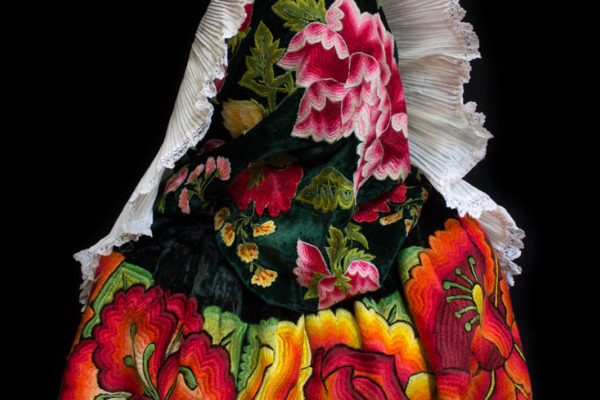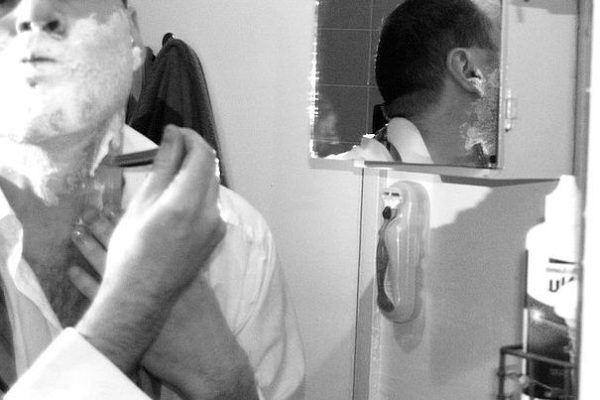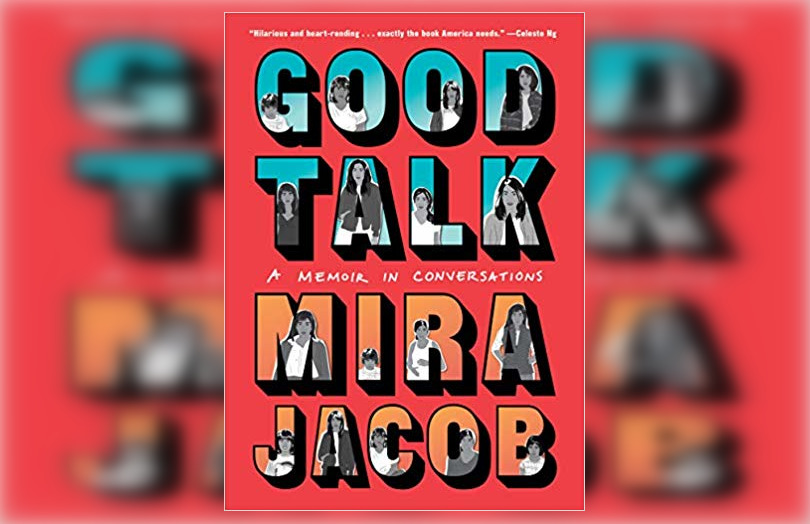People always asked what we were doing there. The rehearsed line I said when people asked was, “We’re expatriates.” In my eight-year-old mind this word that came out like scrap metal meant, “white-people permanently not in white-people land.” That was the only way I had ever heard it applied. I knew I wasn’t Mexican. I didn’t consider myself American. Most of our friends, though fluent in Spanish, were other white people from English-speaking countries. They too were expatriates.
Built on a lake and constantly sinking, Mexico City is surrounded by the Sierra Madres. But unless it was a clear day, you’d never know the mountains were there. Their height keeps the leady combustion from vehicles trapped within the city. In the early 1990s, some days the smog was so bad, school was cancelled. Other days the smog was enough to keep kids inside all day, but not enough to cancel activities. On those days, I rode in my umber school bus along Avenida Las Fuentes and struggled to identify familiar landmarks through the sooty fog. I knew once we passed the Superama grocery store that it was only a few blocks until my bus stop at the corner of Avenida de los Bosques. But I couldn’t see the Superama sign, only the faces of the people on the sidewalk closest to me. None of the faces looked like mine. My skin was as white as Bimbo bread, and theirs all the shades of brown from milky coffee to warm chestnut. There’s a phrase in Spanish, “no hay color”, which literally translated means, “there is no color.” Yet, it is more of an expression to say, “there is no comparison.” Our experiences have no comparison.
Being an expatriate as a child means that it becomes part of your formative identity; it’s not just a stage of life. Children are proverbial sponges, absorbing what is around them. What was around me was Mexico. I knew more about Mexico than any other place. I could tell you the story of los Niños Héroes or the prophecy of Huitzilopochtli. I had taken school field trips to Teotihuacan, the pyramids closest to Mexican City. I ate tamales. My experiences were uniquely Mexican, even if I wasn’t.
Unlike the other expatriates I knew, who were only in Mexico for a brief period for their fathers’ diplomatic positions or multinational jobs, expatriate was a way of life for my family over three generations. Both my father and my grandparents were also “white-people permanently not in white-people land.”
My grandparents arrived in Colombia in 1947 looking for economic mobility and opportunity. My grandfather had realized the hard way that the ideal of the “American dream” wasn’t available to every American. Raised by his great-uncle in a trailer with eight other people outside of Alexander City, Alabama, he never met his father and barely knew his mother. By 17 he moved out and got a job at a slaughter house in Montgomery. He worked his way through college, and met my grandmother during the depression while working for the Tennessee Valley Authority. But after World War II, he came home to find much younger men had taken the jobs he was qualified for. When my dad was 18-months-old my grandfather took up an American business man’s offer to help run Coca-Cola bottling plants in Colombia. It was risky, but my grandfather had no reason to stay in the United States. He didn’t have any family other than his wife and children, and he had only known poverty. So in April of 1947, my grandparents boarded a steamer ship bound for Cali, Colombia.
My grandfather did very well in the bottling business. They stayed in Latin America for the next forty years.
Raised in the cold mountains of Bogotá, Colombia my father became a very tall, white, blue-eyed boy who listed arepas and jugo de lulo as his favorite foods. When he was eleven, a Colombian dictator was overthrown. There was great rejoicing in the streets. My dad, just as jubilant as his Latin friends, jumped on his bike and rode to see another friend across town. When he arrived at his friend’s house, his mother called.
“Honey, sometimes I think you haven’t got the sense of an ant,” she said in her slow, Tennessee accent. “Get home, right now. You aren’t safe.” My Dad loved to tell this story, because it captured one of the many southern idioms my grandmother was famous for and because it had never occurred to him, until that moment, that other Colombians didn’t see him as Colombian. My grandparents always knew who they were. They were expatriates, someone who lived outside their native country. Their native country was the United States, where they were born and raised. But my dad and I started in Latin America. He in Bogota, Colombia and I nearly 40 years later born in Panama and raised in Mexico.
It wasn’t until I got to college in Indiana that I began to wonder what exactly expatriate meant. Mostly, because when I used it amongst other 18-year-olds at my small, Lutheran college, it fell flat and dull on the ground like an unclaimed hub cab.
“What’s an expatriate? Like a missionary?” they would ask.
“Well, sort of like a missionary, just not for God. For Coca-Cola,” I would joke back. Later that year, it stopped being funny: news broke that the bottlers my grandfather worked for were being sued by unions in Colombia for hiring far-right militias to intimidate and murder union members.
My sophomore year I joined a club on campus called “Global Nomads” which mostly consisted of other students raised by foreign missionaries or in military families. They had a term to describe themselves that I felt somewhat fit me: Third-Culture Kid. Someone who grew up in a culture different from the culture of their passport. Though I was born in Panama, my parents were both American citizens at the time of my birth, which allowed me to always carry a U.S. passport.
Meanwhile, in my college classes, my Latin American Studies professors had us read about the “pre-Columbian” era, meaning, before Christopher Columbus. It was then that I learned another word for “white-people permanently not in white-people land”: colonists. Colonists in Latin American history don’t have the prettied up language that United States history does. They aren’t the purported heroes of the story, brave men and women coming to start a new country for the sake of religious freedom. They are the anti-hero. Cruel people who used their positions of power, wealth, and superior weapons to get whatever they wanted. There is a reason why the story differs, though the facts are generally the same. It’s because in Latin America the persecuted survived.
My junior year, I spent a semester studying in Santiago, Chile. Two of the liberators of Chile are Bernardo O’Higgins and Benjamin MacKenna. Thus, it’s not unusual to meet a Chilean who is of English and Irish decent, like I am. The professor of my Chilean history class was a Stanford-educated woman who looked like my mother. I’ll never forget how she began her class.
“We are starting our class in the year 1400,” she said. “You may wonder why I’m doing that. Technically, Chile didn’t become a nation until 1542. Here’s why.”
She slowed her pace in front of the white board. The room quieted until we could only hear the clip-clop of her wooden heels.
“If you think you don’t have native blood running through your veins, you’re in denial,” she looked up at the lecture hall full of students. “You have to learn your native history if you are to truly understand what it means to be Chilean.”
As soon as she said it, I realized how this would never be said to a lecture hall full of American students at my college in Indiana. How many white Americans, myself included, had any native blood? Very few, of course. The United States systematically killed, sickened or displaced native people so white people couldn’t mix with them. The colonists of Latin America, on the other hand, mixed. Through out Latin America, social policies such as Blanqueamiento and Mestizaje sought to whiten populations through European immigration and planned racial mixing to minimize the non-white part of the population. But they never succeeded. No one in Latin America can deny native blood. Except Spanish colonists. And me.
My whiteness felt hostile. I wasn’t an innocent kid looking for belonging as a racial minority in a brown country, like my childhood in Mexico. I was a racial minority that somehow held all of the money and power just by nature of the family I was born into.
During my time in Chile, I grappled with what it would mean to be of native heritage, to have this story of colonization in your very DNA. Chileans were European and indigenous. It was not my story. Though many of my friends decided to stay in Chile or other parts of Latin America and do humanitarian work, I continued to grapple with what “white-people permanently not in white-people land,” really meant.
Instead, I decided to move back to “white people land”—the United States—and see what is was to live among “my people.” Because I was fluent in Spanish and English, I was hired as a school support worker at a middle school where the Hispanic population had jumped from seven percent to 23 percent in just four years. In hearing these kids stories, I saw myself. They felt trapped between two worlds, those of Latin America and of the U.S. They felt embarrassed to speak Spanish, while at the same time, the language felt nostalgic and cozy, a lot like home. Their parents left Latin America to find a better life in the U.S. My grandparents had left the U.S. to find a better life in Latin America. These kids had been brought to the United States as children, building their sense of who they are in the midst of two worlds. I was also straddling these two worlds. In a time when defining your identity was so important, they didn’t fit into one check box on any particular form. The Latino kids I was working with seemed like “my people.”
But I was soon proved wrong.
A year into my job, I applied for fifteen of the kids on my caseload to attend a Latino Youth Leadership Conference. They were accepted and I was thrilled that these kids would get to hear seminars on the history of Indigenous Healing, presentations from spoken word poets about the invisible work of immigrants, and discuss issues of cultural identity. When we disembarked from the tall stairs of the school bus, I ushered the line of kids into the auditorium. Following closely on their heels, I planned to follow them in, but I was stopped by a large, dark-skinned man.
“Teachers and chaperones wait over there,” he said in accented English, pointing to a line of folding chairs in the hallway.
“Pero, estoy con los niños,” I replied.
He looked surprised at my Spanish.
“Mi nombre está en la lista,” I said, pointing to his clipboard.
He looked to where I pointed, but when he saw my Anglo name, he shook his head.
“You can wait here,” he said. “The kids will be back in a few hours.”
“Pero, nací en Panamá. Mi papá creció en Colombia,” pleading my case. The large man looked passed me and waved in another school group, pushing me to the side.
“You can wait here,” he repeated.
I waited dejectedly on the rickety folding chairs with the middle-aged bus drivers.
I wasn’t in denial. I knew that the kids I worked with were mostly undocumented, while I had always held a U.S. Passport. I knew the privilege immigration status carried, and I never took that lightly. I also knew I was white. Most of these kids called themselves, La Raza, a term many Mexican-Americans use to describe their racial mix of Spanish colonizers and indigenous people. I knew La Raza didn’t apply to me. But I saw myself as a cultural bridge between the white world of Midwestern public schools and the Latino world of trying to provide a better life for your kids.
I found joy and purpose in leading “Latina Girls” groups and “Latin Heritage” groups, empowering kids who weren’t being taught their own heritage in schools. I met with their parents. I did home visits. I helped kids pass classes they were failing. I explained diagnoses like ADHD and dyslexia to Latino families who had no cultural context for learning disabilities or Individualized Education Plans. I thought other people could see that I wasn’t like most white people. Even though my skin and my last name betrayed me to my colonizing ancestors – I was different.
Now, sitting on a cold folding chair, I was saw myself as the man with the clip board did, “white people who don’t know how to be white” or worse “white savior.” The next day I broke down and cried in front of my supervisor. I had no word to define where I belonged. If not in that auditorium, then where?
I called my Dad and cried to him on the phone. He was the only person I knew who could understand this particular breed of loneliness. Laying on my bed in my third story apartment, crying so hard I couldn’t see past my tears, I ask him for the first time, “how do you describe yourself to other people? What word do you use?”
He was silent.
“Gringo,” he said with a laugh. His deep, baritone voice was soothing.
I stopped crying and chuckled a bit.
“C’mon, Dad, I’m serious,” I said. I had only heard Gringo used in derogatory contexts.
“I am, too,” he said. “There isn’t another way to describe us. We’re gringos. We’re not Hispanic or Latino. We’re American citizens. Gringo is the best descriptor of who we are. It’s what all of my Latin friends call me.”
My laugh caught in my nose and surprised even me.
“That’s horrible!” I said.
“I’ve begun to see it as a term of endearment.”
“But, aren’t they making fun of you?”
“Maybe, but they trust me enough to call me a gringo to my face. That means something to me, their trust. Part of being white in communities that aren’t white is accepting that you will always stand out. People who have been hurt by white people will take it out on you, and you have to be okay with that.”
“That’s not fair! I didn’t do anything. I am just like them,” I said.
“No, you’re not,” he said with a sigh. “If you keep thinking you are, you’ll keep feeling this way.”
“So what am I supposed to do? Just never belong to any group? I’m too ‘exotic’ to be white and too white to be Latina. I don’t fit in anywhere!”
“Yes, you do. You fit in everywhere. That’s your gift,” he said. I knew he was smiling on the other end of the line. “White people will always see you as white just because of your skin. When you’re in Latin communities they trust you when you speak their language and know their history – because it’s part of your history. When they describe their pain caused by whiteness, you have to suck it up and listen, whether or not you caused it. You can’t be defensive. It’s a great honor and privilege that they trust you with their pain. Your job is to accept it and hold it, not deny it.”
At 25-years-old I didn’t appreciate the depth of his words. They soothed me, but it would take nearly a decade to not only understand my father’s wisdom, but also put it into practice. Holding space for pain without being defensive or uncomfortable requires a view of the world beyond the here and now. It requires a quiet humbleness and generosity of spirit that perhaps only loneliness can hone.
We spent that Thanksgiving in Colombia with my Dad’s family. We went to visit a group of friends he’d known since grade school. As we walked into the sixth floor apartment in downtown Bogotá, a group of six Colombian men in their sixties turned toward us. As soon as they saw my dad their eyes lit up. One threw his arms into the air and ran toward him.
“Gringo!” he said with a smile, wrapping his arms tightly around my dad. “It’s been so long. We haven’t been whole without you.”
In that connection, I knew my dad was right. We’re gringos.




